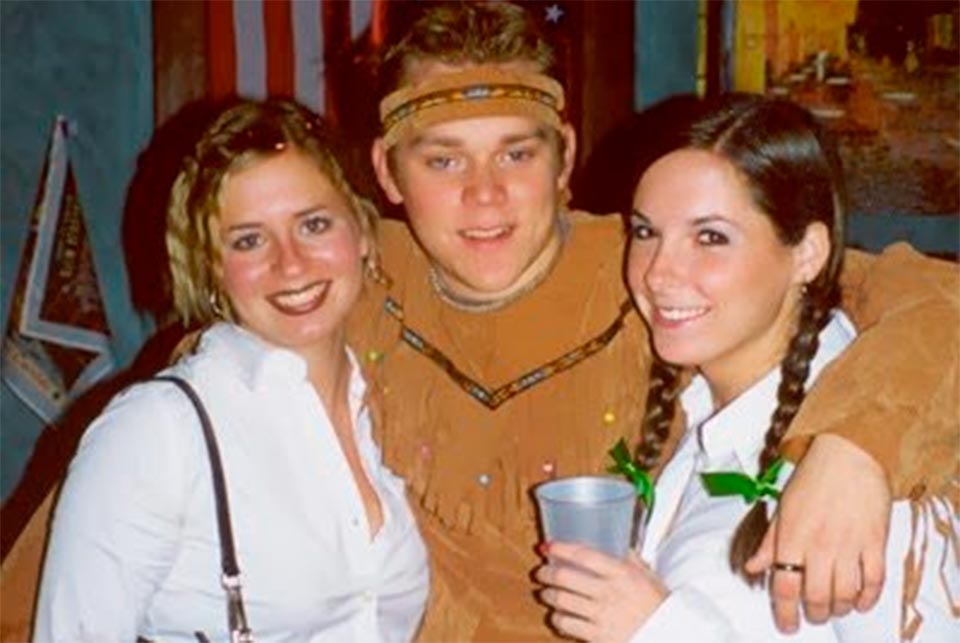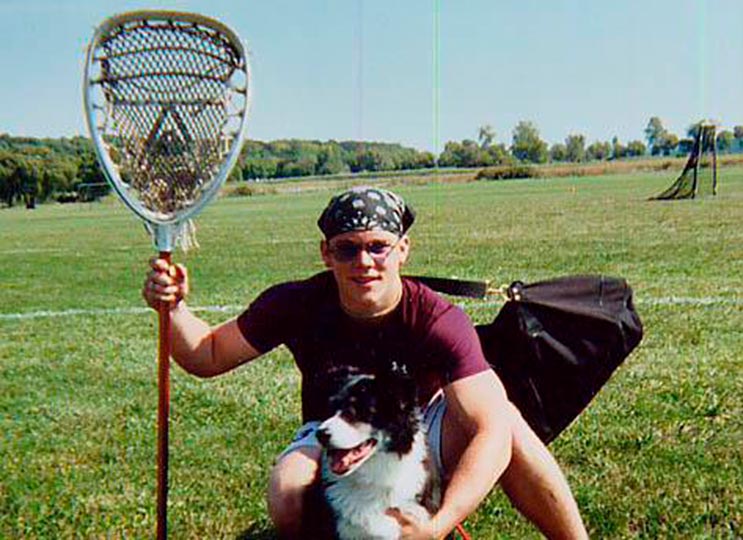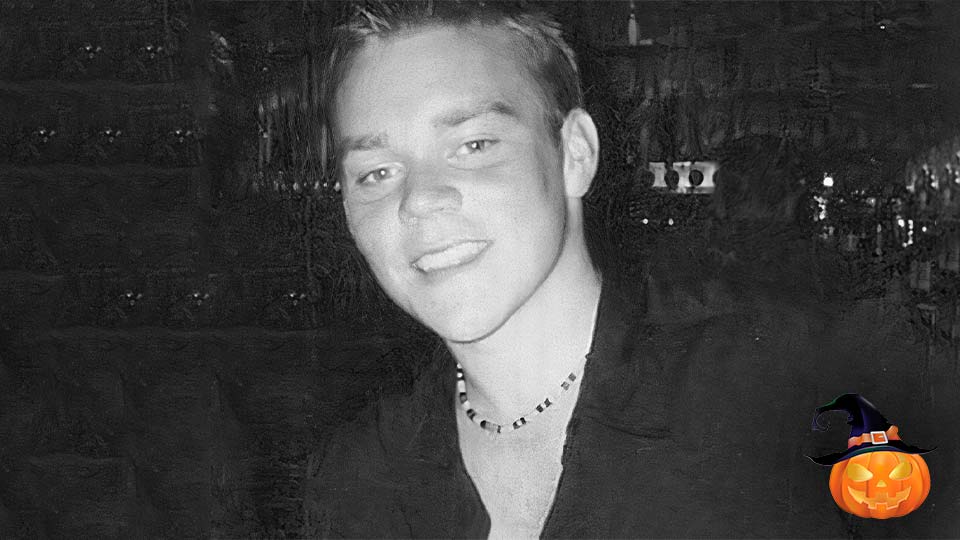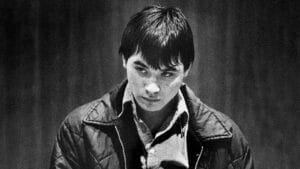Christopher Jenkins, or simply Chris Jenkins, was 21 years old at the time of the crime and was a business administration student at Minnesota College. Described by professors as a diligent student, he was also the captain of the university’s Lacrosse team, a popular sport in North America.
October 31, 2002, Halloween holiday
On the Halloween night of 2002, Chris along with his girlfriend Ashley and a few friends threw a party at their apartment. Around 10:30 PM, the group decides to go to a bar, and everyone is dressed in costumes, with Chris wearing an Indian costume. The outfit didn’t have pockets, so Ashley took care of keeping her wallet, money, and documents in her purse.
At some point in the early morning, Chris appears to be heavily intoxicated and accidentally spills a drink on his pants. The security guard, upon seeing this, kicks him out of the bar, believing that he had urinated in his own clothes and was disturbing the patrons. Chris tries to explain himself, but the security guard doesn’t even listen to him.
Chris Jenkins had no keys, money, or cellphone
It was very cold that night, and Chris ends up being alone on the street without warm clothes, belongings, or a cellphone. The security guard involved in the case was named Mike; he was Ashley’s coworker since Chris’s girlfriend worked as a waitress at the bar during the week. Mike had been introduced to Chris and knew him.

According to reports, after Chris was expelled, Mike approached Ashley in a strange manner, inviting her to dance and offering to take her home at the end of the night. It is believed that Chris’s friends and girlfriend didn’t worry much about his expulsion because they were very drunk or believed that he would go home and the next day they would laugh about what had happened.
The search for Christopher Jenkins begins
In the morning, Chris had not yet returned. The family starts an unsuccessful search and immediately reports his disappearance to the police, who didn’t take it seriously as it involved a drunk young man expelled from a party for disturbing the peace. Nevertheless, family members and friends continue an unofficial search.
A private investigator was hired by Chris’s family, and his first action was to watch security camera footage around a bridge, which was the route to the young man’s apartment. Chris was not seen in the footage.
The next day, the investigator talks to bar employees, who present a different version: Chris had not been expelled but had left the bar on his own accord. The bar owner feels threatened by the questions, hires a lawyer, and obtains a gag order, where no bar employee would speak to anyone without being properly summoned.
Witnesses also said they saw a group of about ten people attacking a young man in front of a restaurant very close to the bar. All of this supposedly happened after midnight, but they couldn’t provide a clear description of this young man.
The police take over the case, and sniffer dogs lead them to a garage near the restaurant mentioned by the witnesses. Feathers are also found on the sidewalk, which could belong to Chris’s costume, and blood stains are noticed on the ground. However, the authorities disregard these pieces of evidence and don’t even analyze them.
The private investigation progresses
It is confirmed that the garage where the dogs picked up Chris’s scent had been used a few days prior by one of the bar’s security guards. The police are notified and search Mike’s car, and the dogs detect Chris’s scent in the vehicle. Once again, this evidence is ignored, with the evasive justification from the police being that Mike has a wife and children, and they wouldn’t disturb him without concrete proof.
Body found in the river
On February 27, 2002, someone passing by the same bridge mentioned earlier notices something that appears to be a body caught in branches with part of it submerged in the river. A call is made to the police, who quickly arrive at the scene. The body is identified as Chris Jenkins.
Initially, everything indicates that Chris may have accidentally fallen from the bridge due to his state of intoxication, or that he may have committed suicide and the body remained there for the following 188 days. The autopsy revealed that the alcohol level in his blood was between 0.9% to 0.12%, and both of Chris’s lung lobes weighed less than a normal lung lobe, but Chris was an athlete and healthy, with excellent physical condition.
Autopsy suggests a new scenario
Hairs with blood, not belonging to Chris but to an unidentified second person, were found in one of Chris’s hands, although the sample was contaminated and couldn’t be further analyzed. He was still wearing the Indian costume, had both shoes on, and had no scratches or any other marks that could indicate a physical struggle.
The investigator and Chris’s family refuse to believe the hypotheses of accidental death or suicide but rather that the young man was kept captive for a while and then killed. The case was closed in the same year due to “lack of leads.”
Case reopened, everything starts to make sense
In 2006, a sheriff from Minnesota decides to reopen the case and review the files. A man testifies that he saw Chris being pushed off the bridge that day by another man. The sheriff follows this lead but finds it strange since Chris was a strong young man, and the bridge had a concrete railing, making it unlikely for a man to overpower and push him so easily.

A forensic investigator involved in the case reopening also suggests that Chris did not die from drowning, as drowning victims are usually found face down with their arms spread open. Chris’s body was found face up, with his head slightly tilted to the side, clenched fists, and crossed arms in an “X” over his chest.
Another intriguing fact is that on the night Chris was ejected from the bar, the same river was frozen and remained so until mid-January. If the boy’s body had been there, it would have been quickly discovered due to the ice preventing the formation of a current.
The new investigation suggests that Chris’s body entered the water about 1 km from where it was found, and there were insects under his skin, creatures that would not survive the harsh American winter. Everything indicates that the body of Chris Jenkins was thrown into the river on the same day it was found.
Main Theories
At the time of the case in 2002, the police had a strong suspect: Jeremy Alford. He was a frequent visitor to the bar and had a criminal record for killing a man named Douglas Muller. Jeremy supposedly had a strong alibi for that night and was ruled out.
Many people also believe in the suicide hypothesis, but this theory is weaker due to the evidence and the course of the case.
Chris could also have been killed by Mike that night in 2002. His body would have been hidden for 188 days, and for some reason, or even to stage a suicide, Mike disposed of him by throwing him into the river. The police never actually considered the security guard as a potential suspect, and the investigation points out many flaws in this regard.
And the last theory, and also the most accepted, is that Chris was a victim of a gang that operated at the time: The Smile Face Gang. A group of serial killers who acted together and targeted young people like Chris.
In total, they had around forty-five victims in eleven states and twenty-five cities in the USA. All the victims disappeared after leaving a bar. Of the 43 gang cases, 45 were considered accidental deaths, except for the cases of Chris Jenkins and Patrick McNeill.
The Patrick McNeill case is very similar to Chris’s. He was a student who disappeared after leaving a bar. His body was also found face up in a river near a campsite in West River, with insects under the skin. The cause of death was determined to be strangulation.
The gang members always drugged their victims. It is believed that Chris was drugged, and a bag was placed over his head, leading to his slow suffocation, which would explain the abnormal weight of his lungs.
Despite all these details, Chris’s case remains unsolved to this day.










